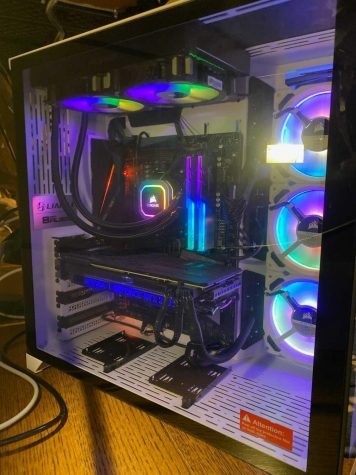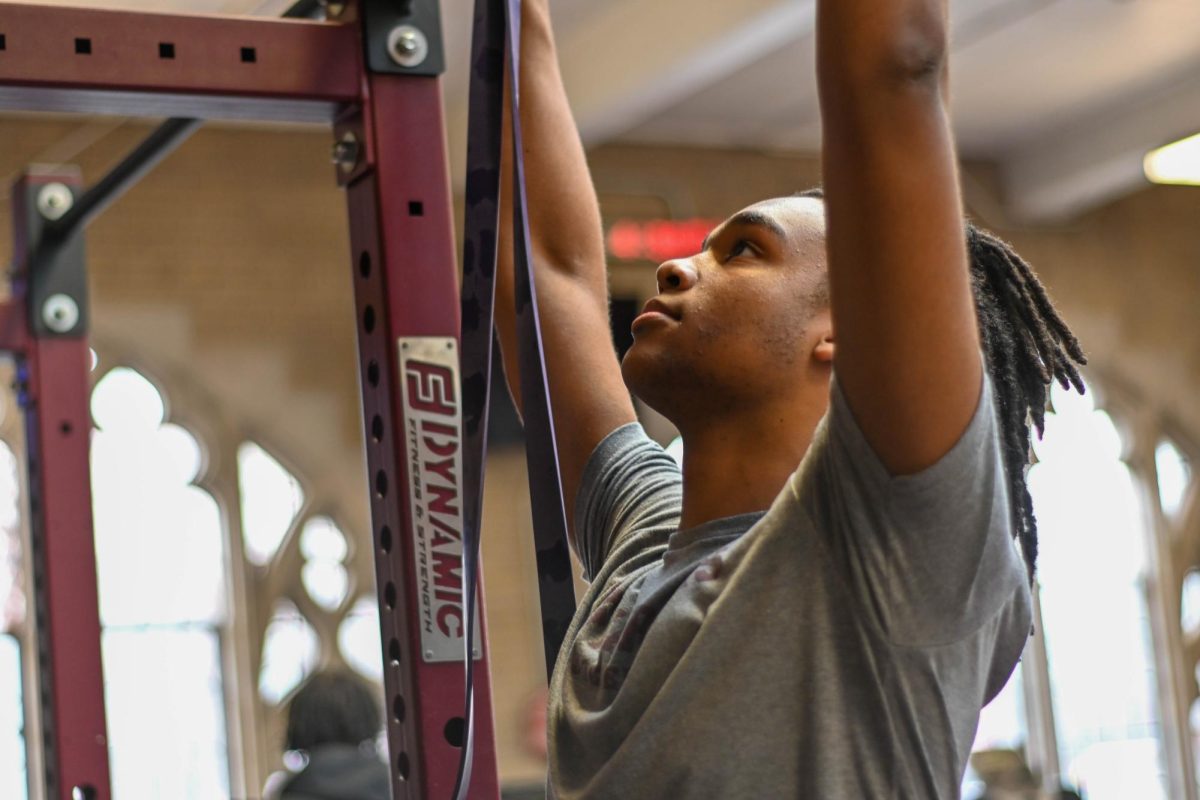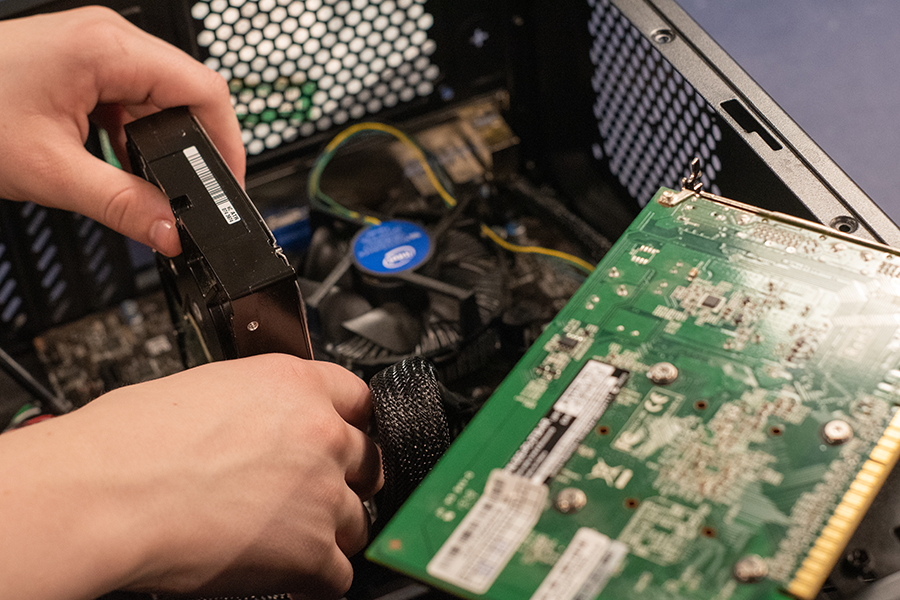Hardware by hand: Teens build PCs for personalization, unique connection
“It’s simultaneously one of the most exciting and relieving feelings to see your computer post for the first time,” Sean said referring to the first time his self-built computer turned on.
December 14, 2020
Starting from several small boxes of seemingly random parts from a multitude of brands, senior Sean Zhang tries to build his first computer. After hours of careful wiring, screwing and unscrewing parts into place and fitting hardware into his computer case, he plugs in his computer to his monitor for the first time.
Success! The computer posts, listing the parts it’s able to detect, the same ones he meticulously picked out and carefully assembled in the days leading up to this moment.
“It’s simultaneously one of the most exciting and relieving feelings to see your computer post for the first time,” Sean said.
Sean is one of several students who have opted to build their own personal computers, choosing greater customizability over the convenience and tech support of pre-built computers, known as prebuilts. They often cite social pressure and the creation of a special bond with their hardware as main reasons.
Because he plays a lot of video games, Sean needed a powerful computer, and he felt pressure from the gaming community to build his own.
“I built my computer to get the best gaming performance for the money I was willing to pay,” Sean said, “but I’d be lying if I said that I would have done it if my friends hadn’t pushed me. There’s a surprisingly big tech community out there, and they are die-hard for getting you to build your own computer. I could’ve still bought one, but it’s like a part of them just dies when you pay money for a prebuilt.”
Building a computer has challenges, so prebuilt PC companies are able to take advantage of the difficulty of building a PC by charging significant fees for building the computer and often selling low-quality hardware.
“If you pay for a prebuilt, you’re paying more money for low-quality components,” said junior Brandon Bousquette, who also built his computer. “Instead you could invest that service fee into upgrades that will significantly improve your gaming experience.”
According to Brandon, these upgrades could include a faster graphics card that makes games feel smoother and more immersive.

Aiming to make PC building and upgrading more accessible, computer hardware channels have sprung up on YouTube, like Linus Tech Tips, which boasts 12.5 million subscribers, and Austin Evans with 4.8 million subscribers. Sean not only learned how to build his computer by watching these videos, he also discovered a surprising side of PC building.
“Before I just thought about it as a smart move financially, but watching videos showed me the geeky fun of being really focused on building the computer,” Sean said. “There’s some excitement in having so much control over your experience, and I definitely went through a phase after building it when I was keeping up with hardware news just because it was really exciting.”
Part of this greater control includes the ability to customize, upgrade and fix individual parts to fit a theme or color palette. Even RGB lights, which can illuminate up to 16.7 million colors, are a common edition to PC hardware and allow users to further customize the look of their computer.
“My first priority was functionality and price, but I was also willing to spend some money on looks — I wanted it to complement the aesthetic of my room with some cool accents like RGB,” Brandon said.
Both Brandon and Sean feel a special connection to their unique builds from overcoming the daunting and personal experience of building a PC.
“I definitely feel a sort of bond every time I turn on my computer,” Brandon said. “It’s a combination of pride and accomplishment since it’s turning on because of me, and I see the proof of that on my monitor.”
Brandon especially appreciates this feeling now, when most of his daily activities have transitioned online.
“Especially during remote learning, my ability to go to school, do work and play games are all tied to this unique computer that only I know the details of,” he said. “It’s really a magical feeling.”
































































